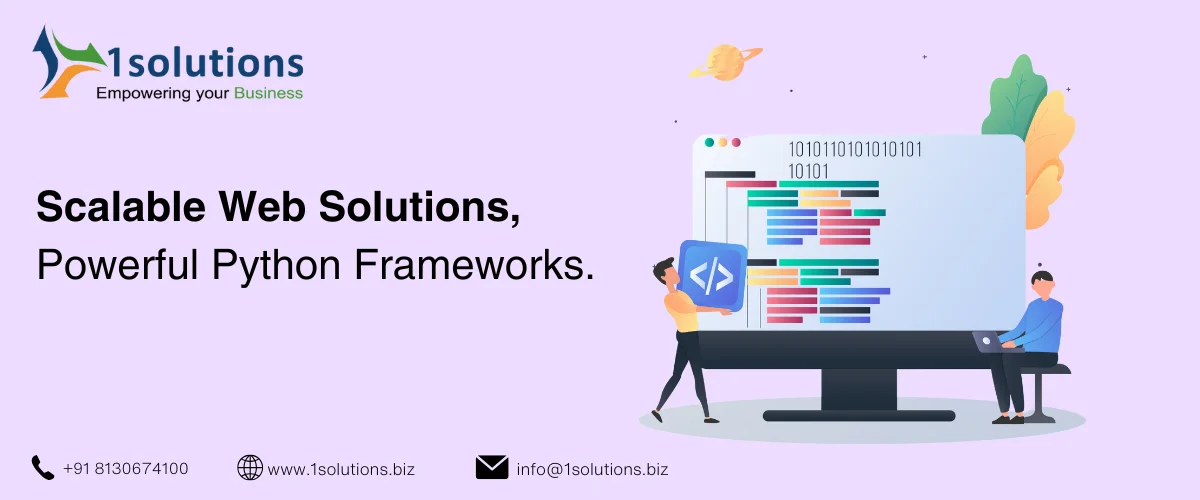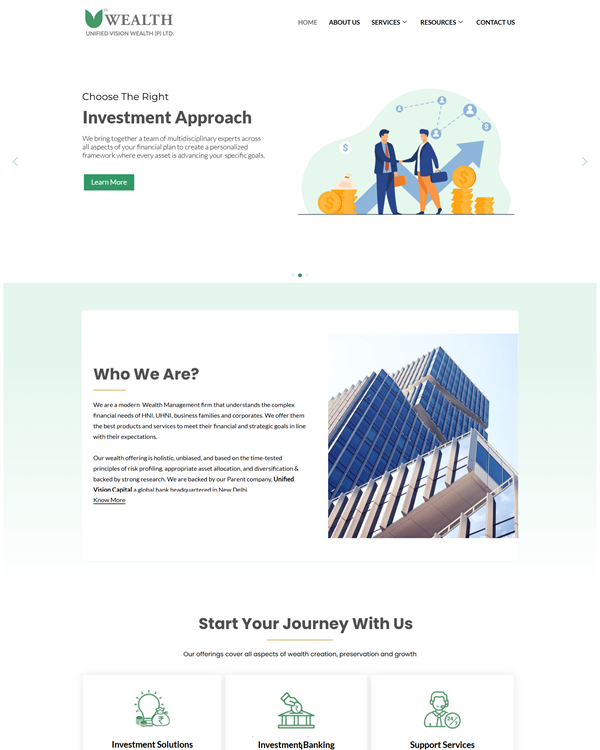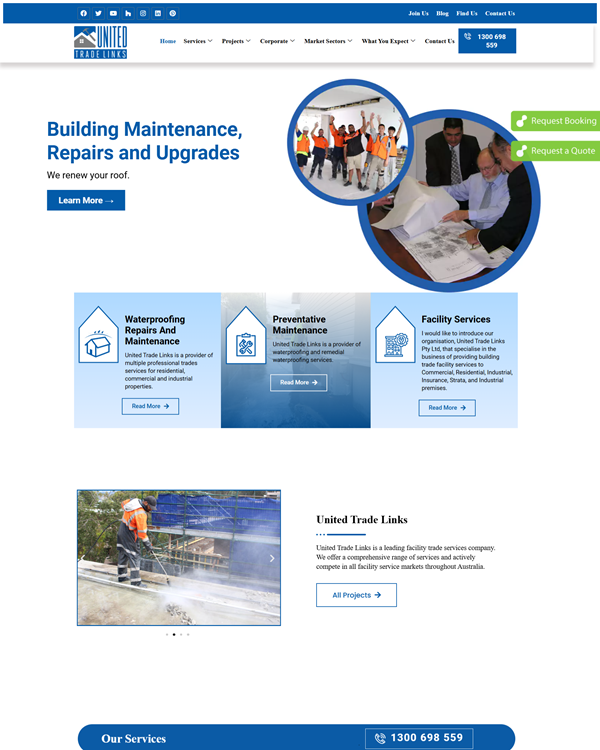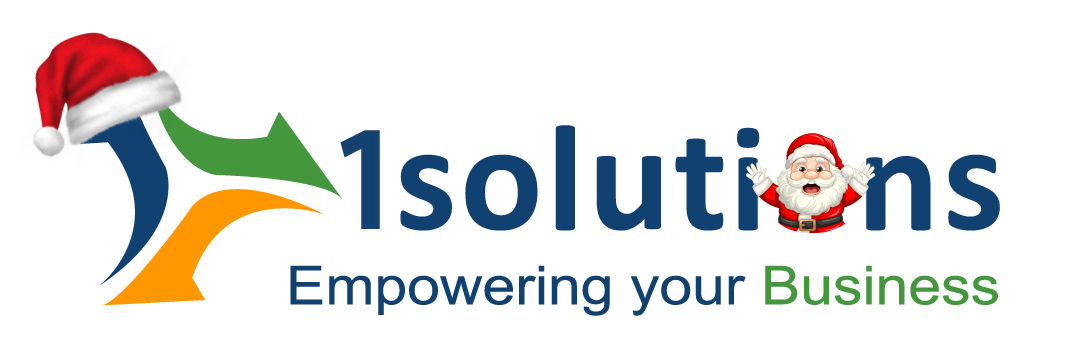
- Digital MarketingSEO ServicesSocial MediaSEO by IndustrySEO ServicesSocial MediaContent MarketingMonthly PackagesSEO Services
Worried about local reach? Hire local SEO experts to boost your business in your area.
Worried about local reach? Hire local SEO experts to boost your business in your area.
Worried about local reach? Hire local SEO experts to boost your business in your area.
Worried about local reach? Hire local SEO experts to boost your business in your area.
Worried about local reach? Hire local SEO experts to boost your business in your area.
Worried about local reach? Hire local SEO experts to boost your business in your area.
Worried about local reach? Hire local SEO experts to boost your business in your area.
Social MediaLorem ipsum dolor sit amet, consectetur adipiscing elit. Ut elit tellus, luctus nec ullamcorper mattis, pulvinar dapibus leo.
Content MarketingLorem ipsum dolor sit amet, consectetur adipiscing elit. Ut elit tellus, luctus nec ullamcorper mattis, pulvinar dapibus leo.
Monthly PackagesLorem ipsum dolor sit amet, consectetur adipiscing elit. Ut elit tellus, luctus nec ullamcorper mattis, pulvinar dapibus leo.
- Design & Branding
- Web/Application DevelopmentEcommerceApp DevelopmentWebsite DevelopmentDedicated Hire
- About Us
Expert Python Development Company
Building Innovative Solutions with Python Expertise
1Solutions is a leading Python development company specializing in crafting high-performance, scalable, and secure applications. Our team of experienced Python developers delivers custom solutions tailored to your specific business needs.
Comprehensive Python Development Services
- Custom Software Development
- Web Application Development
- API Development & Integration
- Data Science and Machine Learning
- Cloud Solutions and Deployment
- Maintenance and Support
At 1Solutions, we offer a full spectrum of Python development services, tailored to meet the diverse needs of businesses across various industries. Our team of highly skilled Python developers possesses deep expertise in building robust, scalable, and secure applications.
From web development and API integrations to data science, machine learning, and cloud solutions, we leverage the power of Python to deliver innovative and high-performing results. We collaborate closely with you to understand your unique requirements and develop custom Python solutions that drive your business forward.
We are committed to quality, transparency, and client satisfaction, ensuring that every project is delivered on time and within budget.
Satisfaction
Completed
Experience
Reviews
Your trusted Python development partner. We collaborate closely with you, understanding your needs and crafting innovative solutions that propel your business forward. Let's build together.

As a leading Python development company, 1Solutions specializes in crafting custom Python solutions that address your unique business challenges.
Our team of experienced Python developers possesses deep expertise across a wide range of Python frameworks and technologies, including Django, Flask, and more.
We leverage this knowledge to build robust, scalable, and secure applications tailored to your specific requirements.
Whether you need a web application, a data-driven solution, or integration with existing systems, our Python development services cover it all. We excel in web development, API development, data science, machine learning, and cloud solutions.
Our collaborative approach ensures that we understand your goals and deliver solutions that align perfectly with your vision. From initial consultation to deployment and ongoing maintenance, we are your dedicated Python development partner.
Our Python Development Services Covers
01.
Web Application
Development
- Building high-performance, scalable web applications using Python frameworks like Django and Flask.
02.
API Development
& Integration
- Creating robust APIs and integrating with third-party services to connect your systems seamlessly.
03.
Data Science &
Machine Learning
- Developing data-driven solutions, including machine learning models and data analysis tools, using Python libraries like NumPy and Pandas.
04.
Cloud Solutions
& Deployment
- Deploying and managing your Python applications on cloud platforms like AWS, Azure, or Google Cloud.
05.
Enterprise Application
Development
- Building complex, mission-critical applications for large organizations using Python.
06.
Maintenance &
Support
- Providing ongoing maintenance, support, and updates for your Python applications to ensure optimal performance and security.
Our Work Portfolio

Trigover usky

Deeshape Buzz

Panjarik iron

Trigover usky

Trigover usky

Trigover usky

Trigover usky

Trigover usky
Trusted by 100+ Clients Globally | ROI Driven Work










How Python Development is Beneficial for Businesses
Python's clear syntax and extensive libraries allow developers to write code faster and more efficiently, leading to quicker project completion and reduced development costs. This translates to faster time-to-market for your products and services.
Python code can run on various operating systems (Windows, macOS, Linux) without significant modifications. This cross-platform compatibility simplifies development and reduces the need for separate codebases, saving time and resources.
Python boasts a large and active community of developers. This means easy access to support, documentation, and a wealth of pre-built libraries and frameworks, accelerating development and problem-solving.
Python applications can be easily scaled to handle increasing traffic and data loads. Its flexible nature allows it to adapt to evolving business needs and integrate with other technologies seamlessly.
Python is versatile and can be used for various purposes, including web development, data science, machine learning, automation, and scripting. This versatility makes it a valuable asset for businesses with diverse needs.
Due to its ease of use, faster development times, and cross-platform compatibility, Python development can be more cost-effective compared to other programming languages. This helps businesses optimize their IT budgets.
Python is the language of choice for data science and machine learning. Its rich set of libraries (like NumPy, Pandas, Scikit-learn) makes it ideal for data analysis, predictive modeling, and building intelligent applications. This is crucial for businesses looking to leverage data for insights and competitive advantage.
Typical Agency

Generic Strategy

Limited Flexibility

Communication Barriers

Higher Cost Structure

Standard Reporting


Customized Strategic Approach

Cost-Effective Expertise

Comprehensive Skill Ecosystem

Advanced Technology Integration

Transparent, Results-Driven Partnership
In House Team

High Recruitment Costs

Limited Expertise Range

Technology Investment

Scalability Issues

Narrow Perspective
What Our Clients Say

- Disha Narang
(Imagine)
Their team is always available when needed, offering the right solutions at the right time. This commitment to service quality is why we have trusted them for several years and continue to recommend them to others with full confidence, knowing they will be in capable hands.
Wishing the entire 1Solutions team continued success!
I am happy with your service, it is exceptional, designing is just great. I am impressed. I advise to all friends to avail your services.
Thank you,
Acharya Praveen Chauhan
Python Development Engagement Models We Offer
$1500 onwards
Fixed Price
- Defined scope
- Set price
- Best for clear projects
- Budget certainty
- Less flexible
- Detailed needs
- Milestone payments
- Set timeline
- Change requests separate
$30/hour
Time & Materials
- Flexible scope
- Hourly/daily rates
- Best for complex projects
- More flexible
- Budget variable
- Collaboration
- Time tracking
- Regular invoices
- Focus on progress
$3000 per month
Dedicated Team
- Dedicated team
- Monthly fee
- Best for long-term projects
- Scalable
- High collaboration
- Direct contact
- Flexible
- Predictable costs
- Long-term partnership
Why Hire Our Python Development Services?
Choosing the right Python development partner is crucial for the success of your project. At 1Solutions, we offer a unique blend of expertise, experience, and client-centric approach that sets us apart. Here’s why you should choose our Python development services:
Experienced Python Developers
Our team comprises highly skilled and experienced Python developers with a proven track record of delivering successful projects. We possess deep expertise in various Python frameworks, libraries, and best practices. We continually invest in our team’s professional development to stay ahead of the curve.
Custom Solutions Tailored to Your Needs
We don’t believe in one-size-fits-all solutions. We take the time to understand your specific business requirements and develop custom Python applications that perfectly align with your goals. Your vision is our priority.
Agile Development Methodology
We follow agile development methodologies, ensuring transparency, flexibility, and continuous feedback throughout the development process. This iterative approach allows us to adapt to changing requirements and deliver projects on time and within budget.
Quality Assurance and Testing
We implement rigorous quality assurance and testing processes at every stage of development to ensure that your Python application is robust, reliable, and performs flawlessly. We’re committed to delivering high-quality code.
Competitive Pricing
We offer competitive pricing models tailored to your project’s scope and complexity. We strive to provide exceptional value for your investment, ensuring that you get the best possible return.
Dedicated Support and Maintenance
Our commitment doesn’t end with project delivery. We provide ongoing support and maintenance services to ensure your Python application runs smoothly and efficiently. We’re here to help you every step of the way.
Why Choose Python for Your Next Development Project?
In today’s fast-paced digital landscape, businesses need to be agile and adapt quickly to changing market demands. This often requires developing new software applications and integrating with existing systems. However, choosing the right programming language can be a major challenge.
Many languages are complex, require specialized expertise, and can be costly to implement. Python offers a compelling alternative: a language that is easy to learn, versatile enough to handle diverse projects, and backed by a thriving community.
So, what makes Python such a popular choice for development projects? The answer lies in its unique combination of simplicity, versatility, and a rich ecosystem of tools and resources.
In this article, we’ll explore the key reasons why you should consider Python for your next development project, from its ease of learning to its powerful capabilities in areas like data science and machine learning.
Python’s reputation as a beginner-friendly language is more than just hype; it’s a key driver of its widespread adoption. Its design philosophy prioritizes code readability, making it an intuitive entry point for aspiring programmers and a productivity booster for seasoned developers. This ease of learning and use translates directly into tangible benefits for your development projects:
Reduced Learning Curve: Python’s clear and concise syntax, resembling plain English, minimizes the cognitive load on learners. This allows them to focus on core programming concepts and problem-solving rather than getting bogged down in complex syntax. The result is a faster ramp-up time for new developers and quicker contributions to projects.
Increased Developer Productivity: Experienced developers also benefit significantly from Python’s readability. Less time is spent deciphering complex code structures, allowing for more efficient development cycles. [Optional: Insert a statistic or citation here about increased productivity with Python if available]. This increased productivity translates to faster project completion and reduced development costs.
Improved Code Maintainability: Python’s clean syntax makes code easier to read, understand, and maintain. This is crucial for long-term projects and reduces the risk of introducing bugs during updates or modifications. A well-maintained codebase is easier to scale and adapt to future needs.
Enhanced Team Collaboration: In collaborative projects, code readability is paramount. Python’s consistent structure makes it easier for developers to understand each other’s work, fostering smoother teamwork and reducing integration issues. This is particularly important in larger projects where multiple developers are involved.
Faster Time-to-Market: The combined effect of a reduced learning curve, increased developer productivity, and improved maintainability leads to faster development cycles. This allows businesses to bring their products and services to market more quickly, gaining a competitive edge.
Cost-Effectiveness: By reducing development time and minimizing maintenance overhead, Python contributes to a more cost-effective development process. This allows businesses to optimize their IT budgets and allocate resources more strategically.
Python’s versatility is one of its most compelling strengths. It’s not just a one-trick pony; it’s a multi-tool, capable of handling a diverse range of development tasks. This adaptability makes Python an excellent choice for projects that require a blend of functionalities or anticipate future expansion into different areas. Here are some key areas where Python shines:
Web Development: Python is a powerhouse in web development, thanks to frameworks like Django and Flask. Django, a high-level framework, provides a robust structure for building complex web applications, while Flask, a microframework, offers more flexibility for smaller projects and APIs. Many popular websites and web applications are built using these frameworks. [Examples: Instagram, Spotify (backend), YouTube]
Data Science and Machine Learning: Python is the undisputed king of data science and machine learning. Libraries like NumPy, Pandas, Scikit-learn, and TensorFlow provide powerful tools for data analysis, manipulation, visualization, and model building. Python’s ease of use and rich ecosystem make it the preferred language for data scientists and machine learning engineers.
Scripting and Automation: Python excels at automating repetitive tasks. Whether it’s file manipulation, system administration, or web scraping, Python scripts can significantly streamline workflows and save valuable time. This makes it a popular choice for DevOps and system administrators.
Desktop GUI Development: While not as widely known for GUI development as some other languages, Python can be used to create desktop applications using libraries like Tkinter, PyQt, and Kivy.
Game Development: Python can be used for game development, particularly with the Pygame library. While not typically used for AAA titles, it’s a great option for indie game development and educational purposes.
Education and Training: Python’s clear syntax and ease of learning make it an excellent language for teaching programming concepts. It’s often the first language taught in introductory computer science courses.
Scientific Computing: Python’s libraries like NumPy and SciPy make it a valuable tool for scientific computing, engineering, and research. It’s used in fields like physics, astronomy, and biology for data analysis and simulations.
Embedded Systems: Python is increasingly used in embedded systems and IoT (Internet of Things) devices due to its flexibility and relatively small footprint.
This breadth of applications means that your team can leverage Python expertise across multiple projects, reducing the need to learn and maintain different programming languages. This consolidation of skills can lead to significant cost savings and improved efficiency. If your project anticipates needing features in any of these areas, choosing Python from the start can be a strategic advantage.
Python’s popularity isn’t just about its technical merits; it’s also about the vibrant and supportive community that surrounds it. A large and active community is a crucial asset for any programming language, providing a wealth of resources, support, and opportunities for collaboration. Here’s how Python’s community benefits your development projects:
Abundant Resources: The Python community has created a vast collection of documentation, tutorials, online courses, and open-source libraries. Whether you’re a beginner looking for introductory materials or an experienced developer seeking advanced techniques, you’ll find a wealth of resources available online. The official Python documentation (docs.python.org) is an excellent starting point, and platforms like Stack Overflow, Real Python, and Python for Beginners offer a wealth of tutorials and articles.
Active Forums and Discussion Groups: If you encounter a problem or have a question, you can easily find help in Python’s active online forums and discussion groups. Communities like Stack Overflow, Reddit’s r/learnpython and r/Python, and dedicated Python mailing lists provide platforms for developers to connect, share knowledge, and troubleshoot issues. This readily available support can significantly reduce debugging time and prevent you from getting stuck on challenging problems.
Extensive Open-Source Libraries and Frameworks: Python’s open-source nature has fostered a rich ecosystem of libraries and frameworks that can be used for a wide range of tasks. From web development (Django, Flask) to data science (NumPy, Pandas, Scikit-learn) to machine learning (TensorFlow, PyTorch), there are pre-built tools available for almost any project. This abundance of open-source resources accelerates development, reduces the need to “reinvent the wheel,” and allows developers to focus on building unique features.
Collaboration and Knowledge Sharing: The Python community is known for its collaborative spirit. Developers are often willing to share their knowledge, contribute to open-source projects, and help others learn. This collaborative environment fosters innovation and accelerates the overall evolution of the language and its ecosystem.
Continuous Improvement: The active involvement of the community ensures that Python is constantly evolving and improving. Bug fixes, new features, and updates are regularly released, driven by the community’s feedback and contributions. This ensures that Python remains a modern and relevant language.
Career Opportunities: The high demand for Python developers has created a thriving job market. The large community provides networking opportunities, access to job boards, and resources for career advancement. This can be a significant advantage for developers looking to build a successful career in the field.
In summary, Python’s large and active community is a valuable asset that provides a wealth of resources, support, and opportunities for collaboration. This supportive ecosystem empowers developers, accelerates project development, and ensures the long-term vitality of the language. It’s not just a language; it’s a community, and being part of that community offers significant advantages.
Python’s cross-platform compatibility is a significant advantage, offering developers the flexibility to write code once and run it on multiple operating systems without significant modifications. This “write once, run anywhere” capability saves time, reduces development costs, and expands the reach of your applications. Here’s how cross-platform compatibility benefits your projects:
Reduced Development Time: Instead of writing separate codebases for different operating systems (Windows, macOS, Linux), you can develop your application primarily in Python and deploy it across multiple platforms with minimal changes. This significantly reduces development time and effort.
Cost Savings: Developing and maintaining separate codebases for each operating system can be expensive. Python’s cross-platform compatibility eliminates this overhead, saving you time and money. You don’t need to invest in specialized development teams for each platform.
Wider Audience Reach: By developing in Python, you can easily reach a broader audience, as your application can be deployed on multiple platforms without requiring users to install specific operating systems. This expands your potential user base and market reach.
Simplified Deployment: Deploying Python applications across different platforms is generally straightforward. Tools and libraries are available to help package and distribute your applications for various operating systems, simplifying the deployment process.
Consistent User Experience: Cross-platform compatibility helps ensure a consistent user experience across different operating systems. Users can interact with your application in a familiar way, regardless of whether they are using Windows, macOS, or Linux.
Increased Flexibility: Cross-platform compatibility gives you more flexibility in choosing your development and deployment environments. You’re not locked into a specific operating system, allowing you to select the tools and infrastructure that best suit your needs.
Easier Maintenance: Maintaining a single codebase for multiple platforms is much easier than maintaining separate codebases. Bug fixes and updates can be applied once and then deployed across all platforms, simplifying maintenance and reducing the risk of inconsistencies.
In summary, Python’s cross-platform compatibility is a powerful feature that streamlines development, reduces costs, expands your audience reach, and simplifies maintenance. It provides developers with the flexibility and efficiency they need to build and deploy applications across a variety of operating systems. This is a significant advantage in today’s diverse technological landscape.
While Python is often praised for its ease of use and versatility, it’s important to address the question of scalability and performance. While Python might not always be the fastest language out of the box, it offers excellent scalability and can be optimized for performance when necessary. Here’s a balanced perspective:
Scalability: Python applications can be scaled effectively to handle increasing traffic and data loads. Techniques like asynchronous programming, message queues, and using frameworks like Celery allow Python applications to distribute workloads across multiple servers and handle concurrent requests efficiently. Furthermore, Python integrates well with technologies like Docker and Kubernetes, which are essential for scaling applications in cloud environments.
Performance Considerations: It’s true that Python is an interpreted language, which can sometimes be slower than compiled languages like C++ or Java for computationally intensive tasks. However, this performance difference is often negligible for many applications, especially web applications and data-driven projects. For performance-critical sections of code, Python can be integrated with C/C++ extensions to achieve significant speed improvements.
Optimization Techniques: Several techniques can be used to optimize Python code for performance. These include profiling to identify bottlenecks, using efficient algorithms and data structures, caching frequently accessed data, and leveraging just-in-time compilers like PyPy.
Web Framework Performance: Web frameworks like Django and Flask have evolved to offer excellent performance for web applications. They incorporate various optimization techniques and can handle a large number of requests per second. Furthermore, using asynchronous frameworks like Tornado or aiohttp can significantly boost the performance of I/O-bound applications.
Data Science and Machine Learning Performance: Libraries like NumPy and Pandas are highly optimized for numerical computation and data manipulation. They leverage C/C++ under the hood to provide excellent performance for data science and machine learning tasks. Furthermore, GPUs can be used to accelerate computationally intensive machine learning models.
When Performance is Critical: If your application requires extreme performance for certain tasks, Python’s flexibility allows you to integrate with other languages. You can write performance-critical components in C/C++ and then integrate them seamlessly with your Python code.
Focus on Business Needs: It’s important to remember that performance is just one factor to consider when choosing a programming language. Often, the benefits of Python’s ease of use, rapid development, and large community outweigh any minor performance differences, especially in the early stages of a project. Focusing on building a working and scalable application is often more important than micro-optimizations.
Python’s cost-effectiveness is a significant advantage for businesses of all sizes. It’s not just about the language being free and open-source; it’s about the overall impact on development costs, time-to-market, and long-term maintenance. Here’s how Python contributes to a cost-effective development process:
Faster Development: Python’s ease of learning and use, combined with its rich ecosystem of libraries and frameworks, allows developers to build applications more quickly. This faster development cycle translates directly into lower labor costs and quicker time-to-market.
Reduced Development Time: Because Python code is often more concise and easier to write than code in other languages, developers can accomplish more in less time. This reduces the overall development time and the associated costs.
Lower Maintenance Costs: Python’s readability and clear syntax make it easier to maintain and update code. This reduces the time and effort required for maintenance, leading to lower long-term costs. A well-maintained codebase also reduces the risk of introducing bugs, which can be expensive to fix.
Abundant Talent Pool: The large and active Python community means there’s a readily available pool of skilled Python developers. This makes it easier to find qualified developers for your projects, reducing recruitment costs and time.
Open-Source and Free: Python itself is free and open-source, meaning you don’t have to pay licensing fees to use it. This significantly reduces the initial investment in software and tools.
Cross-Platform Compatibility: Python’s cross-platform compatibility reduces the cost of developing and maintaining separate codebases for different operating systems. This saves both time and money.
Reduced Training Costs: Because Python is relatively easy to learn, training new developers on Python is generally less expensive than training them on more complex languages.
Faster Prototyping: Python’s rapid development capabilities make it ideal for creating prototypes quickly and efficiently. This allows you to test ideas and validate concepts before investing heavily in full-scale development.
Python has become the dominant language in the fields of data science and machine learning, and for good reason. Its rich ecosystem of libraries, combined with its ease of use and versatility, makes it an ideal choice for data analysis, manipulation, visualization, and model building. Here’s why Python is so strong in this domain:
Extensive Libraries: Python boasts a vast collection of powerful libraries specifically designed for data science and machine learning. NumPy provides efficient numerical computing capabilities, Pandas offers powerful data manipulation and analysis tools, Scikit-learn provides a wide range of machine learning algorithms, and TensorFlow and PyTorch are leading frameworks for deep learning. These libraries, along with many others, provide the building blocks for tackling complex data-driven projects.
Ease of Use for Data Manipulation: Python’s clear and concise syntax makes it easy to work with data. Libraries like Pandas provide intuitive ways to clean, transform, and analyze data, making the data preparation process more efficient.
Visualization Capabilities: Python offers a variety of data visualization libraries, such as Matplotlib and Seaborn, which allow you to create compelling charts and graphs to explore and communicate your findings. These visualizations are essential for understanding data patterns and presenting insights to stakeholders.
Machine Learning Frameworks: Python is the language of choice for many machine learning engineers and researchers. Frameworks like Scikit-learn, TensorFlow, and PyTorch provide the tools necessary to build and train sophisticated machine learning models, from simple regression models to complex deep learning architectures.
Integration with Other Tools: Python integrates well with other data science and machine learning tools and platforms. This allows you to seamlessly incorporate Python into your existing workflows and leverage other specialized tools when needed.
Large Community Support: The large and active Python community provides ample support and resources for data scientists and machine learning practitioners. Online forums, tutorials, and open-source projects make it easy to find help and learn new techniques.
Rapid Prototyping: Python’s ease of use and rapid development capabilities make it ideal for prototyping and experimenting with different machine learning models. This allows you to quickly iterate and find the best approach for your data.
Scalability for Big Data: Python can be used to process and analyze large datasets, especially when combined with tools like Spark. This is crucial for handling the increasing volume of data generated by businesses today.
Frequently Asked Questions
FAQs for Python Development Services
We offer a full range of Python development services, including web application development using frameworks like Django and Flask, API development and integration, data science and machine learning solutions, cloud deployment, enterprise application development, and ongoing maintenance and support.
Our developers have extensive experience with popular Python frameworks such as Django, Flask, Pyramid, and others. We choose the best framework for your project based on its specific requirements. We also work with various Python libraries for data science (NumPy, Pandas, Scikit-learn), machine learning, and other specialized areas.
We prioritize code quality through a combination of best practices, including code reviews, automated testing (unit, integration, and functional tests), and adherence to coding standards. We also use static analysis tools to identify potential issues early in the development process.
We follow an agile development methodology, which emphasizes iterative development, frequent communication, and close collaboration with our clients. This allows us to adapt to changing requirements and deliver projects on time and within budget. Our process typically includes discovery and planning, development and testing, deployment, and ongoing maintenance and support.
We maintain open and transparent communication throughout the project lifecycle. We provide regular updates through meetings, progress reports, and communication platforms. We are always available to answer your questions and address your concerns.
We offer flexible pricing models to suit different project needs and budgets. These include fixed price contracts for well-defined projects, time and materials (T&M) for projects with evolving requirements, and dedicated team models for long-term engagements or ongoing support.
Yes, we offer comprehensive maintenance and support services for all the Python applications we develop. This includes bug fixes, security updates, performance optimization, and technical assistance. We offer different support packages to meet your specific needs.
Services
Company
© 1Solutions | All Rights Reserved | Made with  in India
in India




































